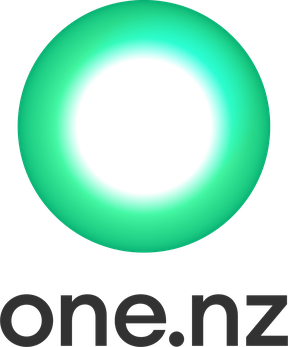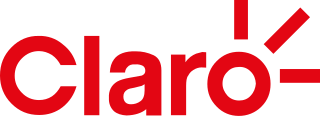
The Global System for Mobile Communications (GSM) is a standard developed by the European Telecommunications Standards Institute (ETSI) to describe the protocols for second-generation (2G) digital cellular networks used by mobile devices such as mobile phones and tablets. GSM is also a trade mark owned by the GSM Association. GSM may also refer to the Full Rate voice codec.
The Universal Mobile Telecommunications System (UMTS) is a third generation mobile cellular system for networks based on the GSM standard. Developed and maintained by the 3GPP, UMTS is a component of the International Telecommunication Union IMT-2000 standard set and compares with the CDMA2000 standard set for networks based on the competing cdmaOne technology. UMTS uses wideband code-division multiple access (W-CDMA) radio access technology to offer greater spectral efficiency and bandwidth to mobile network operators.

T-Mobile is the brand name used by some of the mobile communications subsidiaries of the German telecommunications company Deutsche Telekom AG in the Czech Republic, Poland and the United States.
Rogers Wireless Inc. is a Canadian wireless telephone company headquartered in Toronto, providing service nationally throughout Canada. It is a wholly owned subsidiary of Rogers Communications. The company had revenues of just under $15.1 billion in 2018. Rogers Wireless is the largest wireless carrier in Canada, with 13.7 million subscribers as of Q2 2023.
GSM frequency bands or frequency ranges are the cellular frequencies designated by the ITU for the operation of GSM mobile phones and other mobile devices.
United States Cellular Corporation is an American mobile network operator. It is a subsidiary of Telephone and Data Systems Inc.. The company was formed in 1983 and is headquartered in Chicago, Illinois. UScellular is the fifth-largest wireless carrier in the United States, with 4,656,000 subscribers in 426 markets in 21 states as of the 2nd quarter of 2023. The organization was previously known as U.S. Cellular.

One New Zealand Group Limited, stylised as One NZ, is a New Zealand telecommunications company. One NZ is the largest wireless carrier in New Zealand, accounting for 38% of the country's mobile share market in 2021.
Xfera Móviles, S.A.U., d/b/a Yoigo, is the fourth-largest mobile network operator in Spain and a subsidiary of the Spanish telecommunications company Grupo MásMóvil. Yoigo has a licence and its own cellular network for GSM/2G, UMTS/3G and LTE/4G technologies, and a national roaming agreement for usage of the 2G, 3G and 4G networks of Orange and Movistar.

Ice Wireless is a Canadian mobile network operator and telecommunications company that provides 4G/LTE mobility services, mobile broadband Internet, and fixed line telephone in Canada's northern territories: Yukon, the Northwest Territories, Nunavut, and Nunavik, Quebec. The company's corporate headquarters are located in Markham, Ontario.

Claro Puerto Rico is one of the largest telecommunications services company in Puerto Rico. It is headquartered in Guaynabo, Puerto Rico, and has operated for almost a century offering voice, data, long distance, broadband, directory publishing and wireless services for the island residents and businesses. It was founded by the Behn brothers, Sosthenes and Hernan. Originally, Puerto Rico Telephone Company eventually spawned ITT Corporation, which was founded by Sosthenes Behn. The company was a public corporation of the government of Puerto Rico for many years until the majority stakes were acquired by GTE in the mid-1990s. It was a subsidiary of Verizon Communications until it was fully acquired by América Móvil in 2007.

Iowa Wireless Services LLC, doing business as iWireless, was a mobile network operator founded in 1997, not related to Kroger's service. Headquartered in Urbandale, Iowa, iWireless was a partnership between T-Mobile US, Inc. and Iowa Network Services Inc. iWireless owned licenses to operate GSM cellular networks in the PCS-1900 and AWS-1700 radio frequency bands covering Iowa, southwestern Wisconsin and northwestern Illinois. iWireless had over 250 full-service company stores and authorized dealers across Iowa, western Illinois, and eastern Nebraska. iWireless was acquired in full by T-Mobile and on October 1, 2018, the service was shut down as customers were encouraged to migrate to T-Mobile plans.

Sri Lanka Telecom PLC, doing business as SLT-MOBITEL, is the national telecommunications services provider in Sri Lanka and one of the country's largest companies with an annual turnover in excess of Rs 40 billion. The company provides domestic and corporate services which include fixed and wireless telephony, Internet access and IT services to domestic, public and business sector customers. As of 2018 SLT-MOBITEL was Sri Lanka's second largest mobile network operator with over 7.9 million subscribers.
P4 sp. z o.o., known as Play, is a Polish cellular telecommunications provider. Play was founded in 2007 and has gradually increased its local market share, up to 27% as of 2017. In September 2020, Play became part of French Iliad. Before being sold, Iceland's Novator Partners, led by Icelandic businessman Thor Bjorgolfsson, acquired a large stake in the company. As of November 20, 2020, Iliad owns 96,66% of Play.

West Central Wireless was a local mobile phone provider serving Central and West Texas based in San Angelo, Texas, until their acquisition by Verizon Wireless in 2023. Their cellular services consisted of 850 MHz HSPA+ and GSM networks and an overlayed 700 MHz LTE network. The HSPA+ network began rollout in early 2012. CDMA services once existed due to the acquisition of Five Star Wireless, offering wholesale roaming to service providers, though services were discontinued in 2019.

North-Eastern Pennsylvania Telephone Company (NEP) is a telecommunications provider headquartered in Forest City, Pennsylvania. The company operates as a local exchange carrier in rural areas of Lackawanna County, Wayne County and Susquehanna County. Besides landline telephone, NEP offers Broadband Internet, NEP Datavision IPTV and Wireless Phone Services.

The XT Network was a brand name for a UMTS and LTE mobile network run by Spark New Zealand . The network was initially built nationwide on WCDMA/UMTS 850 MHz, with 2100 MHz infill in major urban areas. The UMTS network is HSPA+ enabled, with a maximum downlink transmission rate of 21.1 Mbit/s and an uplink rate of 5.2 Mbit/s attainable for capable hardware. HSPA+ has a theoretical maximum of 56 Mbit/s download speed and 22 Mbit/s upload speed. Then under Spark 4G LTE is being built out. The network is not 2G capable, Telecom never operated a public GSM network.

2degrees is a New Zealand telecommunications provider. Its mobile network launched on 4 August 2009 after nine years of planning. 2degrees offers prepaid and pay-monthly mobile services, as well as fixed-line phone and broadband services. 2degrees is the third-largest wireless carrier in New Zealand, with 1.3 million subscribers as of July 2015.
3G mobile telephony was relatively slow to be adopted globally. In some instances, 3G networks do not use the same radio frequencies as 2G so mobile operators must build entirely new networks and license entirely new frequencies, especially so to achieve high data transmission rates. Other delays were due to the expenses of upgrading transmission hardware, especially for UMTS, whose deployment required the replacement of most broadcast towers. Due to these issues and difficulties with deployment, many carriers delayed acquisition of these updated capabilities.
Cellular frequencies are the sets of frequency ranges within the ultra high frequency band that have been assigned for cellular-compatible mobile devices, such as mobile phones, to connect to cellular networks. Most mobile networks worldwide use portions of the radio frequency spectrum, allocated to the mobile service, for the transmission and reception of their signals. The particular bands may also be shared with other radiocommunication services, e.g. broadcasting service, and fixed service operation.
Vodafone Australia is an Australian telecommunications brand providing mobile and fixed broadband services. Vodafone’s mobile network covers more than 23 million Australians, and Vodafone has commenced the rollout of its 5G mobile network. Vodafone NBN fixed broadband services are available in capital cities and selected regional centres. Vodafone is the third-largest wireless carrier in Australia, with 5.8 million subscribers as of 2020.











